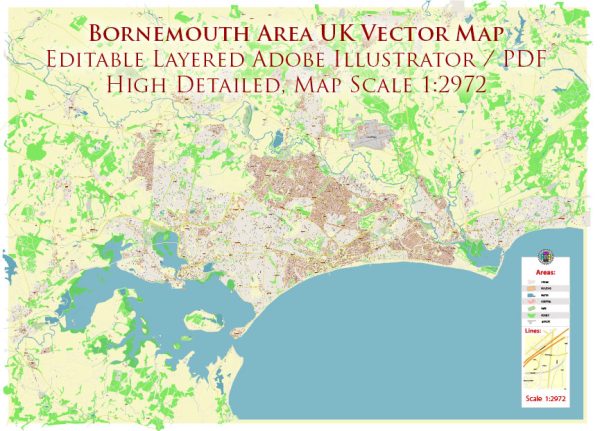Bournemouth is a coastal town located on the south coast of England, known for its beautiful beaches and pleasant climate. The history of Bournemouth’s urban development is quite fascinating, as it has transformed from a small, quiet village into a bustling seaside resort and a vibrant town. Here’s a brief description of the history of urban development in Bournemouth, UK:
- Early History: Bournemouth’s history as a settlement dates back to the early 19th century. Before that, it was a remote and largely uninhabited area with heathlands and marshes. The town was initially a part of the ancient parish of Holdenhurst.
- Development as a Resort: Bournemouth’s transformation began in the early 19th century when a local entrepreneur, Lewis Tregonwell, purchased land in the area and built the first house in what is now Bournemouth in 1810. His vision was to create a health resort, taking advantage of the town’s favorable climate and proximity to the sea. Bournemouth’s reputation as a health destination grew, attracting visitors seeking the benefits of sea air and relaxation.
- Expansion: Bournemouth’s urban development gained momentum during the Victorian era, with an influx of visitors and the construction of more houses, hotels, and amenities. The arrival of the railway in the 1870s made the town more accessible, further fueling its growth.
- Incorporation as a Borough: Bournemouth was officially incorporated as a municipal borough in 1890, gaining a degree of self-governance. This allowed for the implementation of local planning and development initiatives.
- Architectural Styles: The architecture of Bournemouth reflects the various eras of its development. You can find a mix of Victorian, Edwardian, and later architectural styles throughout the town. Many elegant Victorian villas and grand hotels were built during the town’s heyday as a seaside resort.
- Modern Development: In the 20th century, Bournemouth continued to grow and adapt to changing times. It became a popular destination for retirees, leading to the development of retirement communities and care facilities. The town also expanded with residential areas, commercial centers, and educational institutions.
- Today: Bournemouth remains a popular tourist destination, known for its beautiful beaches, gardens, and cultural attractions. The town has diversified its economy beyond tourism, with a focus on education, business, and technology sectors.
- Regeneration: Bournemouth has undergone various regeneration projects to enhance its infrastructure, public spaces, and cultural offerings, ensuring its continued appeal as a coastal town.
Bournemouth’s history of urban development showcases its evolution from a small health resort to a thriving coastal town with a diverse economy and a rich cultural heritage. The combination of its natural beauty and historical development has made it a desirable place to live and visit on the UK’s south coast.


 Author: Kirill Shrayber, Ph.D.
Author: Kirill Shrayber, Ph.D.